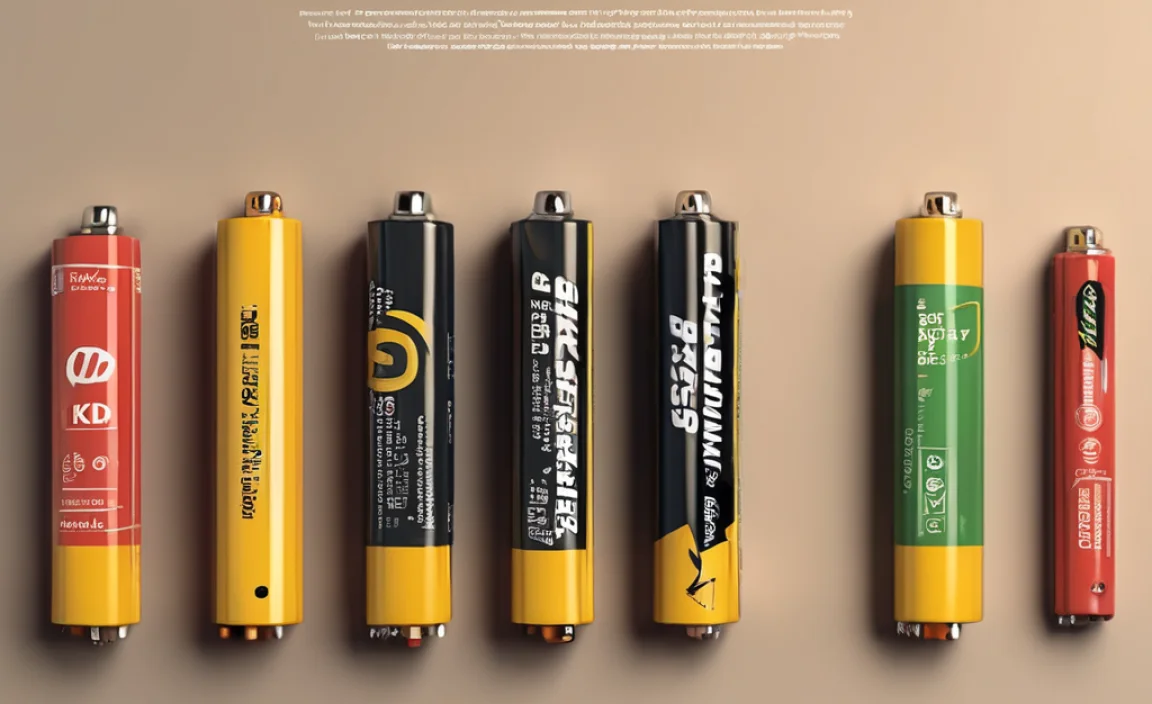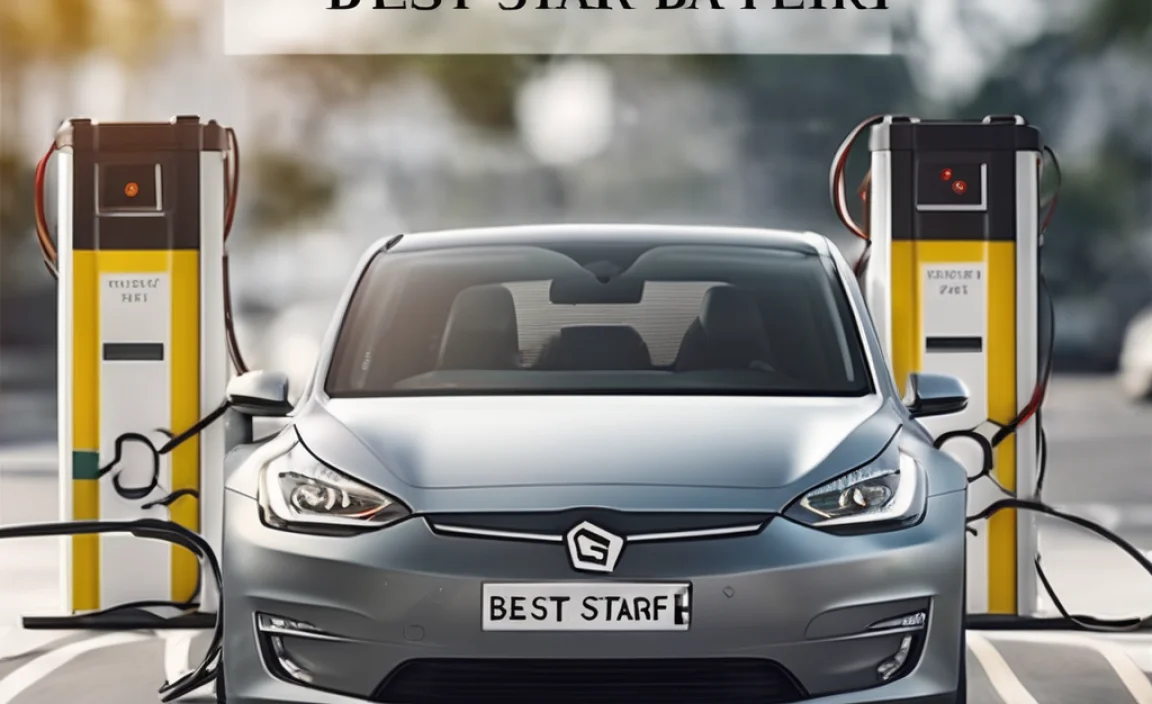Phone Adapter For Scope: Essential Setup Guide
Getting your phone to connect to your scope has never been easier! This guide shows you how to set up your phone adapter for scope in simple steps. It’s straightforward and ensures you can capture and share your observations quickly. We’ll cover everything you need to know for a frustration-free setup.
Have you ever looked through a microscope or telescope and wished you could easily show someone else what you’re seeing? Or maybe you’ve wanted to capture amazing close-up photos or videos of tiny details or distant objects? It’s a common desire, but hooking up your phone can seem complicated at first. You might be worried about fiddly parts or making sure everything fits just right.
That’s where a phone adapter for your scope comes in. It’s a clever little gadget designed to bridge the gap between your optical device and your smartphone. Think of it as a translator, making it simple for your phone to see what your scope sees. There’s no need to be a tech wizard or a seasoned scientist. This guide is here to make the process easy, clear, and confidence-boosting. We’ll walk you through each step, so you can start capturing amazing images in no time.
First, we’ll dive into what exactly a phone adapter for scope is and why you might need one. Then, we’ll get into the setup process itself, covering common types and how to attach them. You’ll also learn some handy tips for getting the best results.
—
What is a Phone Adapter for Scope?
At its heart, a phone adapter for scope is a device that allows you to attach your smartphone to an eyepiece of a scope. This scope could be anything from a microscope for exploring the microscopic world, a telescope for stargazing, binoculars for birdwatching, or even a spotting scope for wildlife observation. The adapter essentially creates a stable connection, aligning your phone’s camera lens with the scope’s eyepiece.
Why Use a Phone Adapter?
The benefits of using a phone adapter are numerous, especially for beginners and hobbyists:
- Capture and Share: Easily take photos and record videos of what you see. This is perfect for documentation, sharing with friends, or educational purposes.
- No More Crowding: Instead of everyone peering through the same eyepiece, you can capture images and let others view them on a larger screen or share them later.
- Learning and Documentation: Amazing for students, researchers, hobbyists, and educators. Document experiments, study specimens, or record bird sightings.
- Cost-Effective: It’s a much cheaper way to get into astrophotography or microphotography than buying specialized cameras. Your smartphone is already a powerful camera!
- Convenient: Your phone is usually with you. With an adapter, you can quickly turn your existing optical equipment into a powerful imaging tool.
Types of Phone Adapters for Scopes
There are a few common designs for phone adapters, each with its own strengths. Understanding these will help you choose the right one for your needs and scope.
1. Eyepiece Clamps
These are perhaps the most common type. They typically consist of a clamp that attaches to the scope’s eyepiece and a bracket that holds your phone.
- How they work: You attach the clamp to the eyepiece, then slide your phone into the holder. You’ll then need to carefully align your phone’s camera lens with the center of the eyepiece.
- Good for: Versatile, often fitting a wide range of eyepieces and phones.
- Considerations: Alignment can sometimes be tricky if the clamp isn’t very secure or your phone is very heavy.
2. Integrated Eyepiece and Holder Units
Some adapters are designed as a single unit that replaces the standard eyepiece of your scope.
- How they work: You remove the existing eyepiece of your scope and screw or insert this adapter in its place. The phone then attaches to this specialized eyepiece.
- Good for: Often provide a more secure and precisely aligned connection because they are designed as a matched pair.
- Considerations: May be specific to certain scope models or eyepiece sizes. Less universal than clamp types.
3. Universal Smartphone Digiscoping Adapters
These are designed to fit almost any smartphone and a wide range of scopes. They often involve a sturdy base that attaches to the scope and a flexible arm or clamp system to hold the phone.
- How they work: A part attaches to the scope’s eyepiece or barrel, and then a phone holder (often a spring-loaded clamp) is positioned to align with the eyepiece.
- Good for: Maximum compatibility with different phones and scopes.
- Considerations: Can be bulkier than simpler clamp designs.
The core principle is always the same: securely holding your phone and precisely aligning its camera with the scope’s optical path.
Essential Setup Guide: Step-by-Step
Let’s get your phone adapter for scope set up! We’ll cover the most common type: the eyepiece clamp. The principles will be similar for other types, just with slight variations in how the adapter attaches to your scope.
Step 1: Gather Your Gear
Before you start, make sure you have everything ready. This makes the process smoother.
- Your scope (microscope, telescope, binoculars, etc.)
- Your smartphone
- Your chosen phone adapter for scope
- A stable surface to work on
- (Optional but recommended) A remote shutter or headphones with volume buttons as a shutter trigger – this helps avoid camera shake.
Step 2: Prepare Your Scope and Phone
First, get your scope ready.
- Ensure it’s clean and fully functional.
- If using a telescope or spotting scope, set it up on a stable tripod. For microscopes, place them on a flat desk or workbench.
- Remove the eyepiece cover from your scope’s eyepiece if it has one.
Now, prepare your phone.
- Remove your phone from its case. Many adapters require a direct fit to the phone for proper alignment. If your case is very slim, you might get away with it, but it’s often best to remove it.
- Make sure your phone’s camera lens is clean.
- Turn on your phone’s camera app.
Step 3: Attach the Phone Adapter to the Scope
This is where the adapter specifically connects to your scope.
- For Eyepiece Clamps:
- Gently slide the clamp part of the adapter over the eyepiece of your scope.
- Tighten the screws on the clamp until it feels secure but not overly tight. You don’t want to damage your scope or the adapter. It should feel snug and not move around when you nudge it.
- For Integrated Units:
- Carefully unscrew and remove the scope’s original eyepiece.
- Screw or insert the adapter unit into the scope where the eyepiece was. Make sure it’s seated correctly and securely.
Step 4: Mount Your Phone onto the Adapter
Now it’s time to place your phone in the adapter’s holder.
- For Eyepiece Clamps:
- The adapter will have a holder, often a spring-loaded clamp or a screw-tightened bracket, designed to grip your phone.
- Gently open the holder and position your phone inside. Make sure the phone is held firmly and won’t slip out.
- For Integrated Units:
- These units usually have a dedicated spot or clip for your phone to attach directly.
- Slide or clip your phone into the designated area.
Step 5: Align Your Phone’s Camera with the Eyepiece
This is the most crucial step for getting clear images!
- Look through your phone’s camera app display. You’ll likely see a dark circle (the view through the scope) with some light bleed or dark edges.
- Slowly move your phone within the adapter’s holder. You need to perfectly center the scope’s eyepiece view within your phone’s camera frame.
- Adjust the position up, down, left, and right until you see a full, clear circle of vision, with minimal dark areas around the edges. This is called achieving “full circle of view.”
- Once centered, you might have small adjustment screws on the adapter to lock your phone’s position. Tighten these gently.
- Focus your scope as you normally would. Your phone’s camera will capture whatever the eyepiece shows.
Step 6: Fine-Tuning and Capturing Images
With everything mounted and aligned, it’s time to take your first shot or video.
- Focusing: Use your scope’s focus knob to bring the image into sharp focus. Your phone’s camera should be able to capture this focused image.
- Zoom: Avoid using your phone’s digital zoom if possible, as it degrades image quality. Try to get the widest view or zoom level you can through the scope itself.
- Shutter Control:
- Use a Remote: If you have a Bluetooth remote shutter or headphones with volume buttons that act as a shutter, use them. This prevents you from touching and shaking the scope or phone when you take a picture.
- Timer: If you don’t have a remote, enable the camera timer (e.g., 3-second or 5-second timer). Tap the shutter button, then calmly step away, allowing the camera to take the picture without any vibration.
- Adjust Brightness/Exposure: Your phone’s camera app may allow you to tap on the screen to set focus and exposure for a specific area. You can try adjusting this to get a better exposure if the image is too dark or too bright.
Tips for the Best Results
Getting a good photo or video with a phone adapter for scope involves a bit more than just attaching it. Here are some professional tips to help you capture amazing shots:
- Stability is Key: A wobbly setup will result in blurry images. Ensure your tripod is solid, your adapter is tight, and your phone is held securely. Consider sandbags for telescopes if you’re in a windy location.
- Clean Optics: Dust and smudges on your scope’s lenses or your phone’s camera lens will show up in your images. Keep them clean! A microfiber cloth is your best friend here.
- Practice Alignment: The first few attempts might be frustrating. Don’t give up! Practice aligning the phone until it becomes second nature. The better the alignment, the less vignetting (dark edges) you’ll have.
- Use the Scope’s Best Magnification: While you might be tempted to crank up the magnification, often the best images are captured at moderate levels where the view is still clear and bright. High magnifications can amplify shaky movements and reduce brightness.
- Experiment with Exposure: Some phone camera apps allow manual control over exposure. If your subject is very bright (like the moon) or very dim (like a nebula), experimenting with exposure settings can significantly improve your results.
- Consider a Dedicated Smartphone Mount: For some applications, like long-term observation or advanced astrophotography, apps like NightCap Camera (iOS) or specialized Android camera apps can offer more manual control.
- Shoot in RAW (if available): If your phone supports it, shooting in RAW format gives you much more flexibility when editing your images later compared to standard JPEG files.
Common Issues and Troubleshooting
Even with the best guides, you might run into a few snags. Here’s how to fix common problems.
Issue: Dark Edges or Vignetting
This is when you see dark circles or a tunnel effect around the edges of your photo.
- Cause: Your phone’s camera lens is not perfectly centered with the scope’s eyepiece.
- Solution: Re-align your phone. Adjust it slowly and meticulously until the full circle of light is centered in your camera’s view. If your adapter has fine adjustment screws, use them to lock the position once centered. Ensure your phone’s camera is not obstructed by the adapter itself.
Issue: Blurry Images
The picture is not sharp.
- Cause 1: The scope is not properly focused.
- Solution 1: Use your scope’s focus knob to bring the image into sharp focus. This is the most common reason for blurriness.
- Cause 2: Camera shake.
- Solution 2: Ensure the adapter and phone are securely mounted. Use a remote shutter or the camera timer to avoid touching the device when taking the shot. Check that the scope is on a stable surface.
- Cause 3: Phone camera focus issues.
- Solution 3: Some phones’ autofocus might struggle. Try tapping on the screen in the camera app to set focus and exposure on the subject. If your camera app allows manual focus, try using that.
Issue: Adapter Won’t Fit
The adapter doesn’t seem to attach to your scope or phone.
- Cause 1: Wrong size eyepiece.
- Solution 1: Ensure the adapter is designed for the diameter of your scope’s eyepiece. Many adapters list the eyepiece diameter they fit. You might need a different adapter if your eyepiece is unusually large or small.
- Cause 2: Phone case is too thick.
- Solution 2: Remove your phone case. Most adapters are designed for a naked phone.
Issue: Poor Image Quality / Too Dark
The image is grainy, noisy, or too dim to see details.
- Cause 1: Not enough natural light or ambient light.
- Solution 1: For microscopes, ensure the specimen stage light is on and at an appropriate brightness. For telescopes, you will naturally get dimmer images at higher magnifications or with faint celestial objects. Try at a lower magnification or aim for brighter targets.
- Cause 2: Phone’s automatic exposure is struggling.
- Solution 2: Try tapping on the brightest part of the image in your camera app to adjust exposure. If possible, use manual exposure settings or a specialized camera app to increase exposure time or ISO.
Connecting to Different Types of Scopes
The basic setup is similar, but here’s a quick look at how it might differ for common scopes:
Microscopes
- Key Difference: Microscopes are used for very close-up views. Adapters often attach to the trinocular port (if available, for dedicated cameras) or, more commonly, to one of the regular eyepiece tubes.
- Setup Focus: Precise alignment is critical due to the high magnification. You’ll be looking at tiny details, so centering is paramount to avoid losing them in the screen edges.
Telescopes
- Key Difference: Telescopes are for distant objects, including planets, the moon, and deep-sky objects. They are usually mounted on tripods.
- Setup Focus: Stability is extremely important due to the long focal lengths and potential for vibration. For astrophotography, using a remote shutter release is almost mandatory to avoid blur.
- External Link: For more on telescope basics, NASA offers a great resource on how telescopes work: NASA – Telescope Basics
Binoculars and Spotting Scopes
- Key Difference: These are often handheld or mounted on lighter tripods than telescopes.
- Setup Focus: Adapters usually attach to one of the eyepieces. The goal is often to capture wildlife or scenic views. You’ll still want a steady hand or a tripod for best results, especially for spotting scopes.
Frequently Asked Questions (FAQ)
Q1: Do I need to remove my phone case to use a phone adapter for scope?
A1: In most cases, yes. Phone adapters are designed to fit the precise dimensions of a phone without a case. A thick case can prevent your phone from seating correctly or make it impossible to achieve proper alignment with the scope’s eyepiece.
Q2: How do I know if I have the correct alignment?
A2: You’ll know you have correct alignment when you see a full, bright, circular image on your phone’s screen with minimal or no dark edges. If you see a dark tunnel or heavy shadows around the edge, you need to adjust the phone’s position until the full circle is visible.
Q3: Can I use my phone adapter with any scope?
A3: Most universal adapters are designed to fit a wide range of scopes, but there can be exceptions. Check the adapter’s specifications for eyepiece diameter compatibility. Some highly specialized scopes might require specific adapter types.
Q4: What if my phone just shows a black screen?
A4: This usually means the camera lens is completely misaligned with the scope’s eyepiece. Double-check that the adapter is securely attached to the scope and that your phone is properly mounted and centered within the adapter. Ensure your phone’s camera app is open and active.



